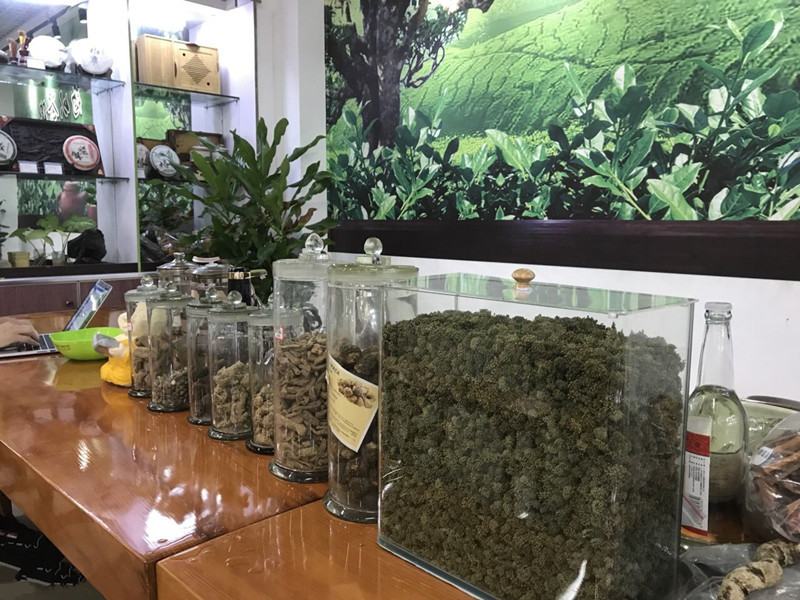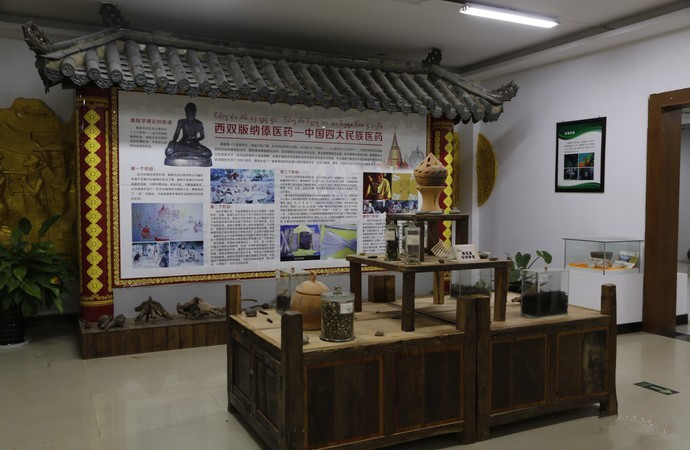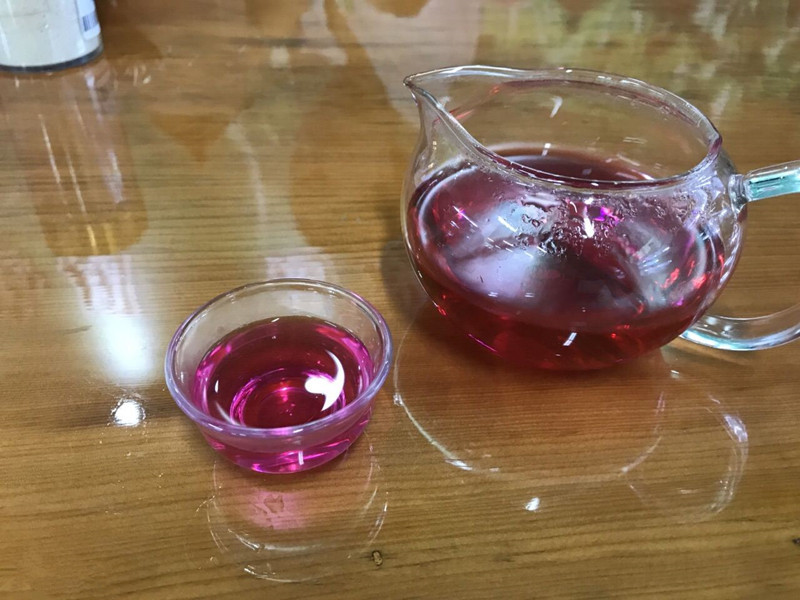
South Medicine Garden (Nanyaoyuan) in Jinghong City, XishuangBanna
The South Medicine Garden (南药园) is a prominent botanical garden located in the heart of Jinghong City (景洪市), the capital of Xishuangbanna (西双版纳), Yunnan Province (云南省). Established in 1959, the garden originated as the Yunnan branch of the Institute of Medicinal Plants of the Chinese Academy of Medical Sciences. Covering an area of over 320 acres, it serves as a critical center for the cultivation, research, and promotion of southern medicinal plants. Additionally, the garden plays a vital role in the conservation of tropical medicinal plant resources and the study of ethnic and folk medicine. This makes it an essential base for research on southern medicinal biological resources in China.
In 2000, the garden was designated as a “Yunnan Province Popular Science and Education Base” by the Yunnan Provincial Government. In 2006, it received recognition as a “National Basic Science Research and Teaching Talent Training Base—Biology Internship Base for Yunnan University” by the National Economic and Technological Commission. Furthermore, in July 2007, the garden was approved as a “National AA-level Tourist Attraction” by the National Tourism Quality Rating Committee. The South Medicine Garden also serves as an educational internship base for colleges such as Yunnan Tropical Crops College (云南热带作物学院) and Xishuangbanna Vocational and Technical College (西双版纳职业技术学院).
Overview
Introduction
For many years, the South Medicine Garden has focused on the introduction, cultivation, and promotion of medicinal plants. After being designated a popular science education base in 1999, the garden intensified its efforts to disseminate scientific knowledge. Supported by the provincial and state science and technology commissions, the garden achieved significant accomplishments during the “Fifteenth Five-Year Plan” period, gaining valuable experience while conducting scientific research. The popular science work has also met its intended goals.
Covering approximately 250 acres, the garden has continuously enhanced and improved its popular science education base construction over recent years. Currently, the South Medicine Garden consists of twelve functional areas:
- Medicinal Culture Square (药文化广场): A central area showcasing the rich history and culture of medicinal plants.
- Southern Medicine Secret Realm (南药秘境): A garden dedicated to exploring the hidden wonders of southern medicinal plants.
- Herb Garden (百草园): A collection of various herbs used in traditional medicine.
- Southern Herb Garden (南百草园): Featuring southern varieties of medicinal herbs.
- Orchid Garden (兰园): Home to numerous orchid species, showcasing their beauty and diversity.
- Dai Medicine Garden (傣药园): Dedicated to the medicinal practices of the Dai ethnic group.
- Rock Plants Area (岩生植物区): A display of plants that thrive in rocky habitats.
- Shade Garden (荫园): Featuring plants that flourish in shaded environments.
- Betel Nut Garden (槟榔园): A garden showcasing the betel nut palm and its cultural significance.
- Show Garden (秀园): A landscaped area for showcasing various plant species.
- Scenic Garden (景园): Offering beautiful views and scenic spots within the garden.
- Fat Sea Germplasm Garden (胖大海种质园): Focused on the preservation of the Fat Sea plant and its varieties.
Through these areas, the garden emphasizes educational opportunities about the medicinal plants’ characteristics and uses, allowing visitors to understand their benefits better.
Botanical Diversity
Currently, the garden has introduced and collected over 1,500 species of southern medicinal, ethnic, and other medicinal plants. Among these are over thirty varieties of valuable southern medicines, including:
- Yanchun Sand Ginger (阳春砂仁)
- Fat Sea (胖大海)
- White Cardamom (白豆蔻)
- Sandalwood (檀香)
- Dragon Blood Tree (龙血树)
- Rhatany (儿茶)
- Cinnamon (肉桂)
- Quinine (金鸡纳)
The garden also houses more than 10,000 medicinal plant specimens and boasts the largest germplasm resource bank of Fat Sea, Strychnine, and Rhatany in China. It also features over 300 species of native orchids and includes some of the longest-cultivated important southern medicines, such as Agarwood (土沉香) and Indian Rosewood (印度紫檀).
Cultural Integration
The South Medicine Garden combines traditional medicinal culture with modern disciplines such as ecology, landscape architecture, plant taxonomy, and tourism studies. It considers the comprehensive requirements of modern tourism, ensuring a rich experience for visitors. Upon entering the garden, guests are welcomed by the Medicinal Culture Square, where life-like sculptures depict the history and culture of Dai medicine. Following the medicinal culture theme, visitors can explore the various distinctive areas, each offering insights into tropical and subtropical medicinal plant resources and the splendid heritage of Chinese medicine.
By merging profound Chinese medicinal culture with the unique characteristics of Dai medicine and medicinal plants, the garden presents an enriching experience for all who visit.
Geographical Location
- Location: In the center of Jinghong City (景洪市), Xishuangbanna (西双版纳), Yunnan Province (云南省).
Admission Ticket Information
- Ticket Price: Information not specified; check local listings for the latest ticket prices.
How to Get There
- By Air: The nearest airport is Xishuangbanna Gasa Airport (西双版纳嘎洒机场). From there, you can take a taxi or a shuttle bus to Jinghong City (景洪市).
- By Bus: Various bus services connect Jinghong City (景洪市) with other major cities in Yunnan Province (云南省), making it accessible for travelers.
- By Car: If you are driving, follow the highway signs that direct you to Jinghong City (景洪市).
Travel Tips
- Best Time to Visit: The ideal time to visit is from October to April, when the weather is mild and suitable for exploring the garden.
- Facilities: The garden is equipped with resting areas that include tables and chairs for visitors. It’s advisable to bring water and snacks, especially if you plan to spend several hours exploring the area.
- Guided Tours: To gain deeper insights into the plants and their medicinal properties, consider joining a guided tour. This offers a more informative experience, enhancing your understanding of the rich biodiversity and cultural significance of the garden.
- Photography: Don’t forget to bring a camera! The garden’s vibrant flora and beautifully designed areas provide excellent opportunities for photography.
- Respect Nature: While enjoying the beauty of the garden, please respect the plants and follow any guidelines provided by the staff to ensure the preservation of this important ecological and cultural site.








Location:

















